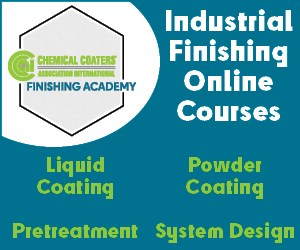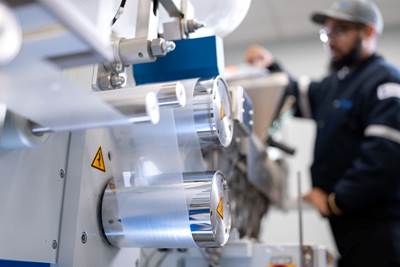Thermal Oxidation for Air Emissions
Helping industry keep up with regulations...
Thermal oxidation has benefited from a series of steady improvements over its life. This evolution has been driven by industry's need to control increasingly larger dilute streams while reducing operating costs. Now, the 1990 Clean Air Act Amendments (CAAA) and its Title V Operating Permit Program place even greater importance on thermal oxidation. Thermal oxidation offers a breadth of proven applications, destruction efficiency, low operating cost and simple monitoring for compliance. Because of this and the CAAA requiring all major sources of regulated air emissions to demonstrate "continuous" control reflecting maximum achievable control technology (MACT) or best available control technology (BACT), thermal oxidation needs to be a top consideration for end-of-pipe control.
The cost of monitoring a control technology can be as high as $500,000; however, a continuous emission monitoring system (CEMS) for a thermal oxidizer can be as little as a thermocouple and a simple indication of flow, like fan speed or load. Additionally, new developments in catalytic oxidation greatly reduce the operating cost of these devices while delivering the same reliable high-destruction efficiency.
The first oxidizers were straight thermal units without any heat recovery. They provided effective control, but were far too expensive for large sources. Next were recuperative oxidizers with shell-and-tube heat exchangers capable of recovering up to 70 pct of the energy of oxidation. However, these units still consumed a great deal of energy and recuperative units soon gave way to regenerative thermal oxidation (RTOs). These units have ceramic beds capable of delivering up to 95 pct thermal efficiency. RTO technology successfully met industry's broad need for reliable control of high-volume dilute emissions.
Yet, if the global market has taught us anything, it is that industry needs to continue its relentless attack on operating costs. Since RTOs operate with high temperatures and large gas volumes, there is still significant energy consumed and thus a potential for further savings.
Catalytic oxidation has long been recognized as offering a path to lower fuel consumption and operating costs. By lowering operating temperatures, catalytic oxidation can provide substantial fuel savings and effectively cut the fuel consumption of a RTO in half. However, the susceptibility of a catalyst to poisoning and degradation from high temperature, until recently, severely limited its application. Industry needed an approach that not only combined the high thermal efficiency of RTOs with lower operating temperatures, but an approach without the inherent risk of poisoning and degradation from over temperature. Lower operating costs have little value without reliable performance/compliance. The development of a low-cost metal oxide catalyst and Regenerative Catalytic Oxidizer (RCO) technology provides a marriage of reliability and fuel savings. This is the next generation in the logical development of thermal oxidation for controlling air emissions.
Regenerative catalytic oxidation can provide savings far greater than reduced fuel consumption. Recuperative and regenerative thermal oxidizers typically operate at temperatures above 1400F. These high temperatures create mechanical failures in valves, ducting and heat exchangers, which can shut down production lines for days. RCOs operate at temperatures 500 to 800F and lower. Additionally, RCOs use much longer cycle times (as much as 10 x), which translates directly to less valve cycling and wear. These lower temperatures and longer cycle times can only reduce mechanical failures and increase production time. Additionally, the RCO's lower temperature does not induce oxidation of nitrogen in the air and can avoid the production of NOx from nitrogen containing VOCs.
The key to the success of RCO technology is the development of a family of metal oxide catalysts. These catalysts not only resist typical forms of poisoning, but are stable for prolonged periods of operation above 1350F. Like the RTO, the RCO uses ceramic packed beds for regenerative heat exchange. A shallow bed of catalyst is placed on top of the ceramic beds to accelerate VOC destruction and provide additional heat exchange. The real differences between an RCO and an RTO are operating temperature and residence time. A catalyst accelerates destruction and lowers operating temperature, which reduces the residence time required for a given destruction efficiency. Because temperature and residence time combine to determine maximum gas volume for an RTO, an RCO of the same size can have a 20 to 30 pct greater capacity.
The significant similarities between RCOs and RTOs provide an excellent basis for retrofitting existing RTOs to RCOs. Old existing units can be readily upgraded to increase capacity and/or provide significant fuel savings. Destruction efficiency and reliability can be improved. Lower operating temperatures with longer cycle times can reduce lost production from RTO mechanical failures.
A Successful Installation. 3M's Printing and Publishing Division in Weatherford, Oklahoma, recently retrofit its existing RTO to an RCO. The installation was a test to define potential savings for its more than 80 operating thermal oxidizers. Fuel consumption was substantially decreased and pressure drop and VOC destruction efficiency were equal to that of the RTO.
The unit selected for retrofitting was a standard design RTO with three vertical columns, a normal loading of ceramic packing, and a combustion chamber fired by two natural gas burners. The unit was rated at 22,000 acfm and operated normally at about 15,000 acfm and at 1500F.
The retrofit took just two days and was scheduled over a weekend to minimize any loss of manufacturing time. MEC personnel opened the unit and inspected all internal components, including the valves, to insure all were in good working condition. A thin layer of catalyst, predetermined by computer modeling, was added to the top of each bed of ceramic. Then, additional ceramic was placed on top of the catalyst to protect it from radiant heat. Three new thermocouples were installed to monitor catalyst temperature in the three beds.
MEC engineers redesigned the unit's control system to take advantage of the performance available from an RCO. Cycle times were lengthened to reduce the operating time of the valves, their operators, and other support equipment by about six times. Maximum and minimum temperature limits were reset to reflect the new 800F operating temperature. The new thermocouples were integrated into the control logic. The new "RCO" was started up using, essentially, the normal RTO startup procedures and was back "on-line" Monday morning. MEC supplied a compliance testing protocol for certification of the unit.
Success was largely the result of thermal stability provided by the metal oxide catalyst. While the original unit was never intended to operate at high temperatures, there were process conditions that periodically fed high VOC concentrations to the oxidizer, driving temperature well above the design set point. These conditions were defined, computer modeled and then simply made part of the RCO's control scheme.
Related Content
NASF/AESF Foundation Research Project #120: Electrochemical Destruction of Perfluorooctanesulfonate in Electroplating Wastewaters – January – December 2023
This NASF-AESF Foundation research project report covers quarterly reporting for the year 2023 at the University of Illinois at Chicago. The objective of this work is to utilize a cost-effective reactive electrochemical membrane (REM) for the removal of PFAS from synthetic electroplating wastewater. Discussed here are the oxidation of PFOA with three different catalysts, development of a method for detecting PFAS, as well as work on 6:2-fluorotelomersulfonic acid (6:2 FTS) and electrodeposited bismuth/tin oxide catalysts.
Read MoreZinc Phosphate: Questions and Answers
Our experts share specific questions about zinc phosphate and pretreatment
Read MoreUltrafiltration Membranes, Filter Elements for Improved Industrial Water Reuse
Ultrafiltration membranes help with water reuse in a variety of applications.
Read MoreNASF/AESF Foundation Research Project #122: Electrochemical Approaches to Treatment of PFAS in Plating Wastewater - 10th Quarterly Report
The NASF-AESF Foundation Research Board selected a project addressing the problem of PFAS and related chemicals in plating wastewater streams. This report covers the 10th quarter of work (April-June 2023). Here, we examine the effect of surface fluorination of Ti4O7 anodes on PFAS degradation performance in terms of energy performance as well as formation of chlorate and perchlorate when chloride is present in the solution. The full paper on this work can be accessed and printed at short.pfonline.com/NASF24Feb2.
Read MoreRead Next
A ‘Clean’ Agenda Offers Unique Presentations in Chicago
The 2024 Parts Cleaning Conference, co-located with the International Manufacturing Technology Show, includes presentations by several speakers who are new to the conference and topics that have not been covered in past editions of this event.
Read MoreEpisode 45: An Interview with Chandler Mancuso, MacDermid Envio Solutions
Chandler Mancuso, technical director with MacDermid Envio discusses updating your wastewater treatment system and implementing materials recycling solutions to increase efficiencies, control costs and reduce environmental impact.
Read MoreDelivering Increased Benefits to Greenhouse Films
Baystar's Borstar technology is helping customers deliver better, more reliable production methods to greenhouse agriculture.
Read More










.jpg;maxWidth=300;quality=90)










